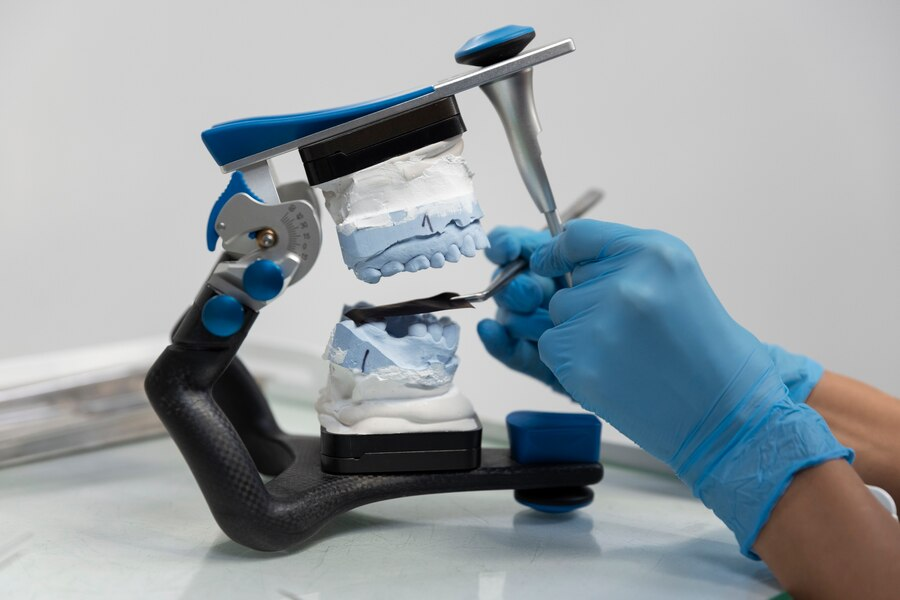The field of dentistry has witnessed significant advancements in recent years, with technology playing a pivotal role in revolutionizing traditional practices. One such innovation that has transformed the landscape of dental procedures is 3D printing. From fabricating dental models to creating custom implants, 3D printing has emerged as a game-changer, offering unprecedented precision and customization. In this article, we delve into the role of 3D printing in customizing dental implants and how it has led to improved outcomes for patients.
Understanding Dental Implants
Dental implants are artificial tooth roots that are surgically placed into the jawbone to support replacement teeth or bridges. They serve as a durable and long-lasting solution for individuals with missing teeth, offering both functional and aesthetic benefits. Traditional methods of fabricating dental implants involve a series of manual processes, including molding and casting, which are time-consuming and may lack precision.
The Emergence of 3D Printing in Dentistry
The introduction of 3D printing technology has revolutionized the way dental implants are designed and manufactured. Also known as additive manufacturing, 3D printing enables the creation of three-dimensional objects layer by layer, based on digital models. This process offers unparalleled accuracy and allows for the customization of implants according to the patient’s specific anatomical features.
Customization Through Digital Scanning and Design
One of the key advantages of 3D printing in dentistry is its ability to create custom implants tailored to each patient’s unique oral structure. The process begins with the use of intraoral scanners to create digital impressions of the patient’s teeth and gums. These digital scans provide detailed information about the patient’s dental anatomy, allowing for precise design and customization of the implant.
Using specialized CAD (Computer-Aided Design) software, dental professionals can manipulate the digital scans to design implants that perfectly fit the patient’s mouth. This customization extends beyond simply replicating the shape of the missing tooth; it also takes into account factors such as bone density, gum tissue contours, and bite alignment. As a result, 3D-printed implants offer a level of precision and comfort that is unmatched by traditional, off-the-shelf alternatives.
Material Selection and Biocompatibility
Another crucial aspect of dental implant fabrication is the selection of materials that are both biocompatible and durable. 3D printing allows for the use of a wide range of materials, including titanium, cobalt-chromium, and various biocompatible polymers. These materials can be precisely layered to achieve the desired strength, flexibility, and aesthetic properties.
Titanium remains the material of choice for many dental implants due to its excellent biocompatibility and osseointegration – the process by which the implant fuses with the surrounding bone tissue. With 3D printing, titanium implants can be fabricated with intricate surface textures that promote faster osseointegration and enhance long-term stability.
Accelerating the Manufacturing Process
Traditional methods of manufacturing dental implants often involve multiple stages of production, including casting, machining, and finishing. These processes can be time-consuming and labor-intensive, leading to longer lead times and increased costs. In contrast, 3D printing streamlines the manufacturing process by eliminating the need for molds, tools, and manual labor.
Once the digital design is finalized, 3D printers can produce the implant in a matter of hours, significantly reducing production times. This rapid turnaround time is particularly beneficial for patients who require immediate implant placement or those undergoing complex dental procedures. By accelerating the manufacturing process, 3D printing enables dental professionals to provide timely and efficient treatment, ultimately improving patient satisfaction and outcomes.
Enhanced Accuracy and Predictability
The precision offered by 3D printing technology translates into enhanced accuracy and predictability during implant placement procedures. By using digital surgical guides, dentists can precisely plan the position and angle of the implant placement, ensuring optimal fit and alignment. These guides are created based on the patient’s digital scans and serve as a roadmap for the surgical procedure.
During the implant placement surgery, the surgical guide acts as a template, guiding the dentist’s hand movements and ensuring precise positioning of the implant. This level of accuracy reduces the risk of errors and complications, such as nerve damage or implant misalignment. As a result, patients experience shorter recovery times and lower rates of post-operative complications, leading to improved overall outcomes.
Patient-Centric Approach
Perhaps the most significant advantage of 3D printing in dentistry is its ability to empower patients through personalized care. By involving patients in the design process and allowing them to visualize the proposed treatment outcomes, 3D printing fosters greater collaboration and transparency between dental professionals and their patients.
Patients appreciate the ability to see a digital preview of their new smile and actively participate in the decision-making process regarding their treatment plan. This patient-centric approach not only improves patient satisfaction but also leads to better treatment adherence and long-term oral health outcomes.
Future Directions and Challenges
While 3D printing has already made significant strides in the field of dentistry, ongoing research and development efforts continue to push the boundaries of what is possible. Advancements in materials science, bioprinting, and digital imaging technologies hold the promise of further enhancing the accuracy, reliability, and accessibility of 3D-printed dental implants.
However, challenges remain, particularly concerning regulatory approvals, standardization of processes, and affordability. As 3D printing technology becomes more widespread and accessible, addressing these challenges will be crucial to realizing its full potential in mainstream dental practice.
Conclusion
In conclusion, 3D printing has emerged as a transformative technology in the field of dentistry, particularly in the customization of dental implants. By leveraging digital scanning, design software, and additive manufacturing techniques, dental professionals can create implants that are precisely tailored to each patient’s unique oral anatomy. This level of customization not only improves the fit, comfort, and aesthetics of dental implants but also enhances overall treatment outcomes and patient satisfaction. As 3D printing technology continues to evolve, it holds the promise of revolutionizing dental care and ushering in a new era of personalized dentistry.
